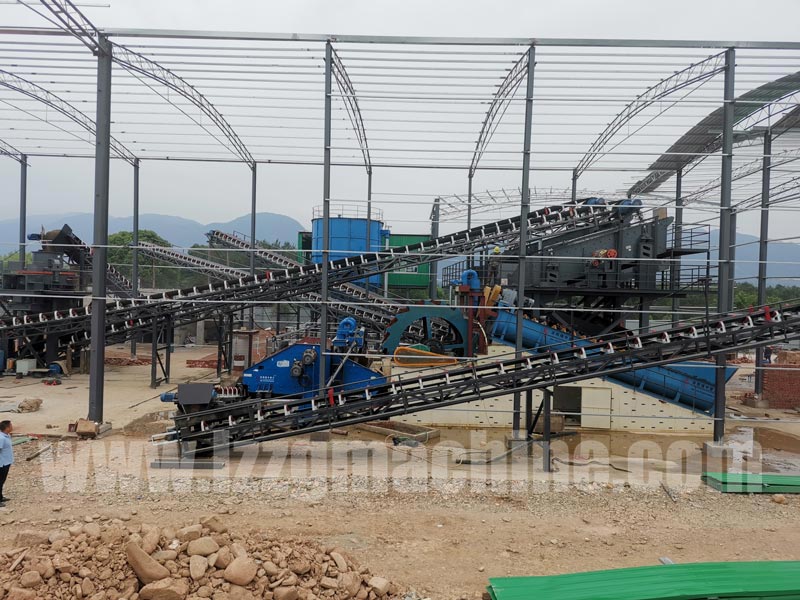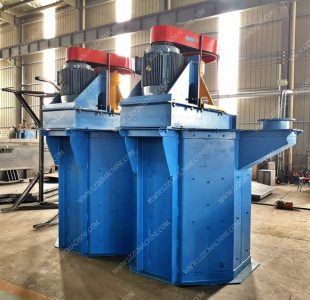Purification of silica sand
The process of cleaning silica sand is crushing, washing/, magnetic separation, acid leaching, washing, dehydration, and drying.
water washing
Washing sand recycling machine working principle. After the natural silica sand is classified and filtered by the screening equipment, the qualified products flow into the spiral sand washing machine through the launder or the pipeline. It is fully cleaned, soaked and broken by a screw mixer (for larger muddy and extra-large effect), sandstone is fully separated from impurities and mud.
Fine sand and muddy water are deposited in the tail of the spiral washing, and the recovery of fine sand is achieved through a concentration and recovery device. Then the coarse and fine sand enters the wheel washing machine at the same time for secondary cleaning to achieve complete separation of the sediment.
Scrub
With the help of mechanical force and the grinding and peeling force between the sand grains, the thin film iron, adhesive and muddy impurity minerals on the surface of the silica sand are removed, and the unconstituted mineral aggregates are further smashed, and then the classification operation is performed to further purify the silica sand.
Pickling
If the finished sand has a high iron content, it will enter the pickling process. First, it will be washed to remove powder and impurities, and then pickled, soaked and washed, dried or cooled.
Magnetic separation is mainly used to remove magnetic minerals in silica sand. For example, weak magnetic minerals such as hematite, limonite, and biotite can be removed by a strong magnetic machine, while strong magnetic minerals such as magnetite can be subjected to weak magnetic separation. Machine removed. Flotation is used to remove some impurities that cannot be removed by magnetic separation, such as feldspar and mica in silica sand, to further improve its purity.

Then the coarse sand is lifted into the high-frequency dewatering sieve feed end by the impeller of the wheel washing machine, and the overflow mud water flows into the high-frequency dewatering sieve water tank through the pipeline and then is recycled into the high-frequency dewatering sieve through the concentration and separation device. The vibration of the sieve is dehydrated, and finally, the sandstone is cleaned, recovered, dehydrated and discharged.

Comments
Post a Comment